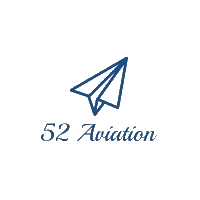Title Page
-
Auditor
-
Conducted on
-
Last Audited
-
Location
-
Audit Standard EASA Part 145 IR, AMC & GM
-
Basic Questions include; Management & Oversight, Ownership of Procedures, Competence & Training “as required” , Completeness, Compliance & Validity of Procedures, Additional Guidance is shown as instructions In all cases please identify the reference of MOE and Associated Procedure
Audit
Compliance monitoring programme
-
145.A.200 ‘Management System’ point (a)(6)
AMC1 145.A.200(a)(6) ‘Compliance monitoring – general’
AMC2 145.A.200(a)(6) ‘Compliance monitoring – Independent audit
AMC3 145.A.200(a)(6) ‘Compliance monitoring – Contracting of the independent audit’
GM2 145.A.200(a)(6) ‘Compliance monitoring – audit plan’
145.A.70 ‘Maintenance Organisation Exposition (MOE)’ AMC1 145.A.70(a) ‘MOE’ point 3.8 -
Do the contents of the compliance programme full assess the regulatory requirements?<br>
-
Does the organisation use risk and performance to determine the depth and frequency of monitoring activities?
-
Has the organsiation identified what triggers a change in the programme and have any such triggers been managed?
-
Are there are any potential conflicts of interest that may affect the organisations compliance monitoring programme?
Responsibilities and accountability for compliance monitoring
-
145.A.200 ‘Management System’ points (a)(1) and (a)(6) and GM1
145.A.30 ‘Personnel requirements’
GM1 145.A.30(b) ‘Responsibility for ensuring compliance’
AMC1 145.A.30(c);(ca) ‘Safety management and compliance monitoring function’ point (b)
GM1 145.A.30(cb) ‘Responsibility of the nominated persons to the Accountable Manager’
145.A.70 ‘Maintenance Organisation Exposition (MOE)’
AMC1 145.A.70(a) ‘MOE’ point 3.12 -
Has the compliance monitoring manager maintained adequate interactions at all levels within the organisation including; senior management, line managers and the safety management staff?
-
Has the compliance monitoring manager maintained adequate interactions at all levels outside of the organisation including; the staff of external organisations, having a significant contribution to the safety?
-
Can the organisation evidence that senior management act on compliance monitoring results?
-
Is the number of staff involved in compliance monitoring appropriate for the size and scope of the organisation?
-
Does the Compliance Manager have direct reporting lines to the accountable manager?
-
Has the organisation achieved independence of the audit function?
Responsibilities and accountability for ensuring compliance
-
145.A.200 ‘Management System’ points (a)(1) and (a)(6) and its AMC1.
145.A.30 ‘Personnel requirements’
GM1 145.A.30(b) ‘Responsibility for ensuring compliance’
AMC1 145.A.30©;(ca) ‘Safety management and compliance monitoring function’ point (b)
GM1 145.A.30(cb) ‘Responsibility of the nominated persons to the Accountable Manager’
145.A.70 ‘Maintenance Organisation Exposition (MOE)’
AMC1 145.A.70(a) ‘MOE’ point 1.4 -
Have senior management ensured the organisation remains in compliance?
-
Do job descriptions clearly include responsibilities for compliance?
-
Do contracts, with the external organisation(s), properly address the needs for ‘compliance’?
-
Is there evidence that senior management act on internal and external audit results?
-
When deficiencies are detected are they linked to the applicable significant risks to control?
-
Are root causes identified within the compliance monitoring system, feed into the Hazard Identification and Risk Assessment (HIRA) process?
-
Has the organisation identified how independence of the internal audit function is achieved?
Compliance Monitoring Outcomes
-
145.A.200 ‘Management System’ point (a)(6)
AMC4 145.A.200(a)(6) ‘Compliance monitoring – Feedback system’
145.A.70 ‘Maintenance Organisation Exposition (MOE)’
AMC1 145.A.70(a) ‘MOE’ point 3.8 -
Has the method for casual analysis been identified by the organisation, used consistently, and adapted to the size of the organisation and its complexity of activities?<br>-
-
Has the organisation reviewed any repeat findings, or where actions have not been implemented or have fallen overdue?<br>
-
Has the organisation ensured the timely implementation of actions raised?
-
Is there evidence that senior management are aware of the status of significant findings and related CA/PAs?<br>
-
Has the organisation ensured that appropriate personnel participate in the determination of causes and contributing factors?
-
Has the organisation identified any inconsistencies between internal audit results and external audit results? Is there evidence of these being addressed?
-
Has the organisation identification the systemic causes and contributing factors of findings and used this information to update/liaise with the hazard identification and risk assessment (HIRA), including the safety objectives and its associated safety performance measurement & monitoring, when appropriate?
-
Has the organisation identified what type of information should be reported to the Accountable manager (or Safety Review Board or any safety committees, as appropriate) to support the HIRA and the establishment of safety objectives and has this information been raised as it has been identified?














